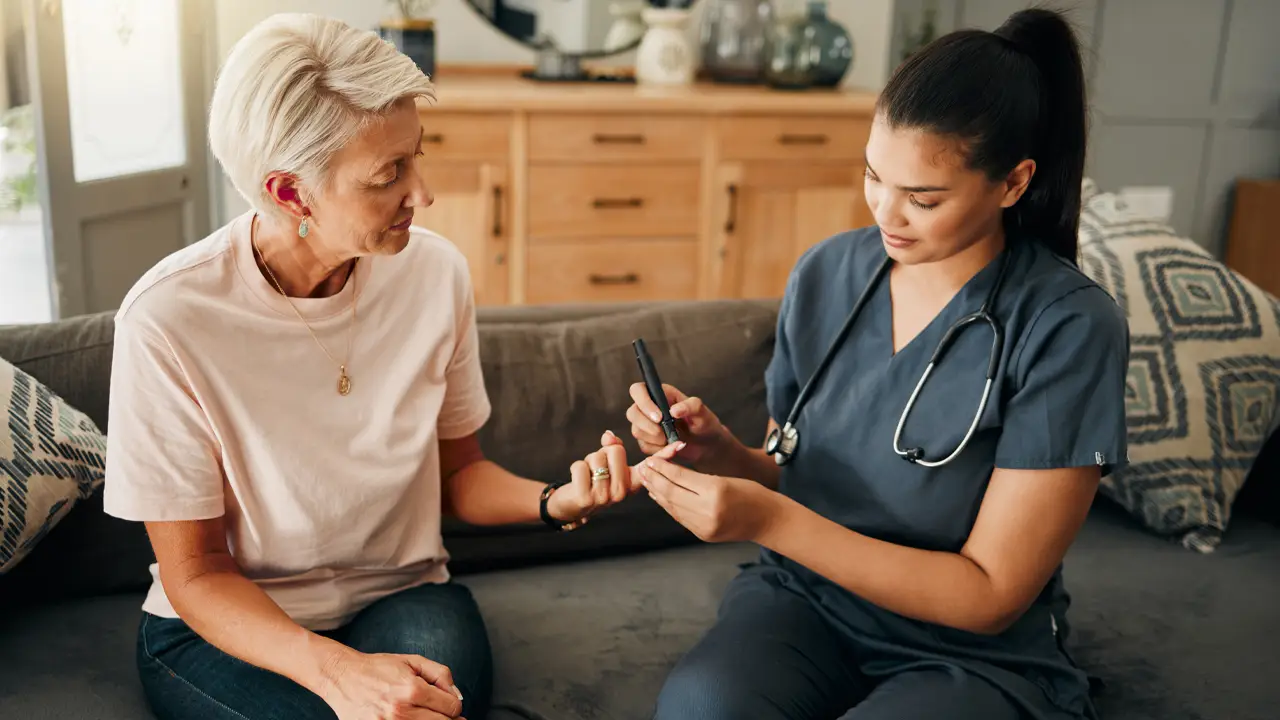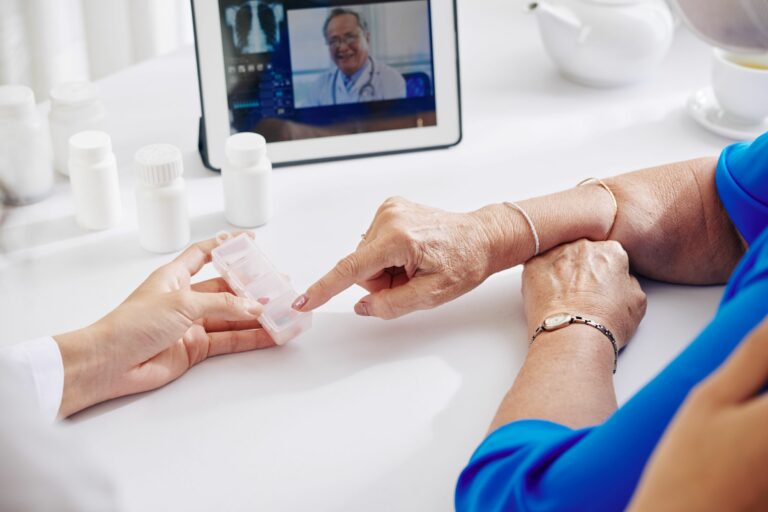Diabetes is a widespread health issue affecting millions globally. The American Diabetes Association states that every year, 1.4 million Americans receive a diabetes diagnosis. Early recognition and effective management of the condition are essential to prevent severe health problems.
With technological advancements, remote patient monitoring (RPM) has become a convenient way for people with diabetes to monitor their health from home.
This article delves into the basics of diabetes testing and diagnosis, including how RPM plays a role in testing and managing high blood sugar levels for those with diabetes symptoms.
Types of Diabetes Tests
Diagnosing and managing diabetes requires regular testing to monitor levels of blood glucose. There are various types of tests available, including fasting blood sugar tests, oral glucose tolerance tests, hemoglobin A1c tests, random blood sugar tests, continuous glucose monitoring, and fingerstick tests. Each test measures the amount of glucose in the blood and helps healthcare professionals determine if an individual has diabetes or is at risk of developing it.
Fasting Blood Sugar Test
This test involves measuring the glucose levels in the blood after a period of fasting. It is utilized to detect type 2 diabetes or prediabetes. Abnormal results of this test might suggest uncontrolled diabetes. The test is conducted after abstaining from food and drinks for a minimum of 8 hours. A blood sugar level of 99 mg/dL or less is considered normal, whereas levels between 100 to 125 mg/dL indicate prediabetes, and 126 mg/dL or more suggest diabetes.
Oral Glucose Tolerance Test (OGTT)
The OGTT involves taking a blood sample to assess the body’s glucose metabolism after drinking a sweetened liquid. The test is used for diagnosing type 2 diabetes, prediabetes, and gestational diabetes.
If the blood glucose levels are elevated, it may indicate the presence of diabetes, which is confirmed if the two-hour blood glucose level is 200 mg/dL or higher. During pregnancy, a blood sample will be taken every hour for 2 to 3 hours. If the blood glucose levels are elevated two or more times during the OGTT, it suggests that the individual may have gestational diabetes.
Hemoglobin A1c Test
The Hemoglobin A1c Exam evaluates the average concentration of glucose in your blood over a 2 to 3 months period. This examination is used for the detection of type 2 diabetes and pre-diabetes. Elevated test results may suggest the existence of diabetes. A diagnosis of diabetes is made when the A1C is 6.5% or higher.
Random Blood Sugar Test
The Random Blood Sugar Test is a straightforward procedure that determines the glucose levels in a blood sample taken at random. This test is conducted to diagnose uncontrolled diabetes. If the test result shows higher-than-normal glucose levels, it may suggest the presence of uncontrolled diabetes. A blood sugar level of 200 mg/dL or above is considered as a sign of diabetes.
Continuous Glucose Monitoring (CGM)
This test involves wearing a small device that continuously measures the blood sugar level and sends the results to a receiver. It can help people with type 1 diabetes better manage their condition by providing real-time information about their blood sugar levels.
Fingerstick Test
This test involves pricking the finger to obtain a small blood sample, which is then applied to a test strip and read by a blood glucose meter. It is a common method of testing blood sugar levels at home.
How to Prepare for Diabetes Tests
- Fasting Plasma Glucose Test (FPG): You will need to fast for at least 8 hours before the test.
- Oral Glucose Tolerance Test (OGTT): You will need to fast for at least 8 hours before the test.
- Hemoglobin A1c Test: No special preparation is needed for this test.
- Random Blood Sugar Test: No special preparation is needed and can take this test at any time.
- Continuous Glucose Monitoring (CGM): You may need to wear a continuous glucose monitoring device for several days prior to the test.
- Fingerstick Test: No preparation is required for this test. Simply clean your finger and ensure it is dry before the test is performed.
DrKumo Remote Patient Monitoring Solution for Continuous and Accurate Diabetes Testing and Management
At the forefront of healthcare technology, DrKumo offers an RPM solution that tackles some of the biggest challenges in the industry. With a user-friendly design, the RPM solution features cutting-edge technology, including a HIPAA-compliant mobile platform, real-time monitoring, and advanced AI/ML capabilities, making it a highly scalable solution for healthcare.
DrKumo’s state-of-the-art RPM solution provides an accurate and convenient way of testing for diabetes at home through the use of a blood glucose meter. With continuous glucose monitoring technology, patients can track their blood sugar levels in real-time and receive alerts for any changes, leading to timely interventions and improved overall health outcomes.
The real-time updates and continuous monitoring give patients the information they need to make informed decisions about their diet, exercise, and medications. Additionally, the RPM solution enables prompt intervention from healthcare providers for more effective diabetes management.
Takeaways
Diabetes testing and diagnosis is an important step in managing this chronic condition. Understanding the different tests available, and how to prepare for them, can help you get the most accurate results and ensure that you receive proper treatment. With the added benefit of DrKumo RPM technology solutions, you can test and manage their condition from the comfort of your own home.
Take control of your diabetes with DrKumo RPM solution. Get real-time monitoring and updates from the comfort of your home. Contact us today.








